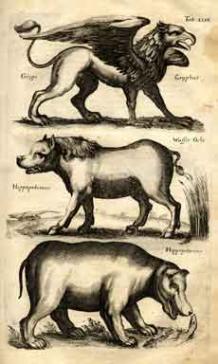This project argued that the creative imagination played a crucial role in the development of science during the scientific revolution. Modern natural knowledge emerged from the interaction of painters, printmakers, cartographers, and natural historians. All these practitioners carefully observed and cataloged all the exotic naturalia that flooded Europe during the Columbian exchange. Yet their collaboration did not end there. They also engaged in a joint, conjectural guesswork as to what other, as yet unknown plants and animals might hide in the forests of New England or in the archipelago of the Caribbean. From its beginnings, science was (and still is) an imaginative and speculative enterprise, just like the arts. Imagining Natural History traces the exchange of visual information between the artists of the Renaissance and the natural historians of the scientific revolution. We might not be surprised to learn that creative artists, from Leonardo to Bosch and Jan Brueghel I, frequently portrayed imaginary plants and animals in their artwork. These creatures often looked deceptively realistic, yet they were the product of the artistic imagination. Strikingly, contemporary natural history took these clearly fictitious images very seriously. Natural historians did not shun them as the fanciful diversions of an excessive imagination. Instead, they treated these imaginary creations as educated guesses at what possible lifeforms might still be hiding in the distant corners of the Earth. These naturalists considered artists as their partners in moving beyond observation to conjecturing what other lifeforms might be possible.

Jan Jonston. Historiae naturalis de quadrupetibus. Frankfurt am Main: impensis haeradum Math. Meriani, 1652. Thesaurus Eruditionis, Camena.
Project
(2013-2014)
Imagining Natural History
- Daniel Margocsy
